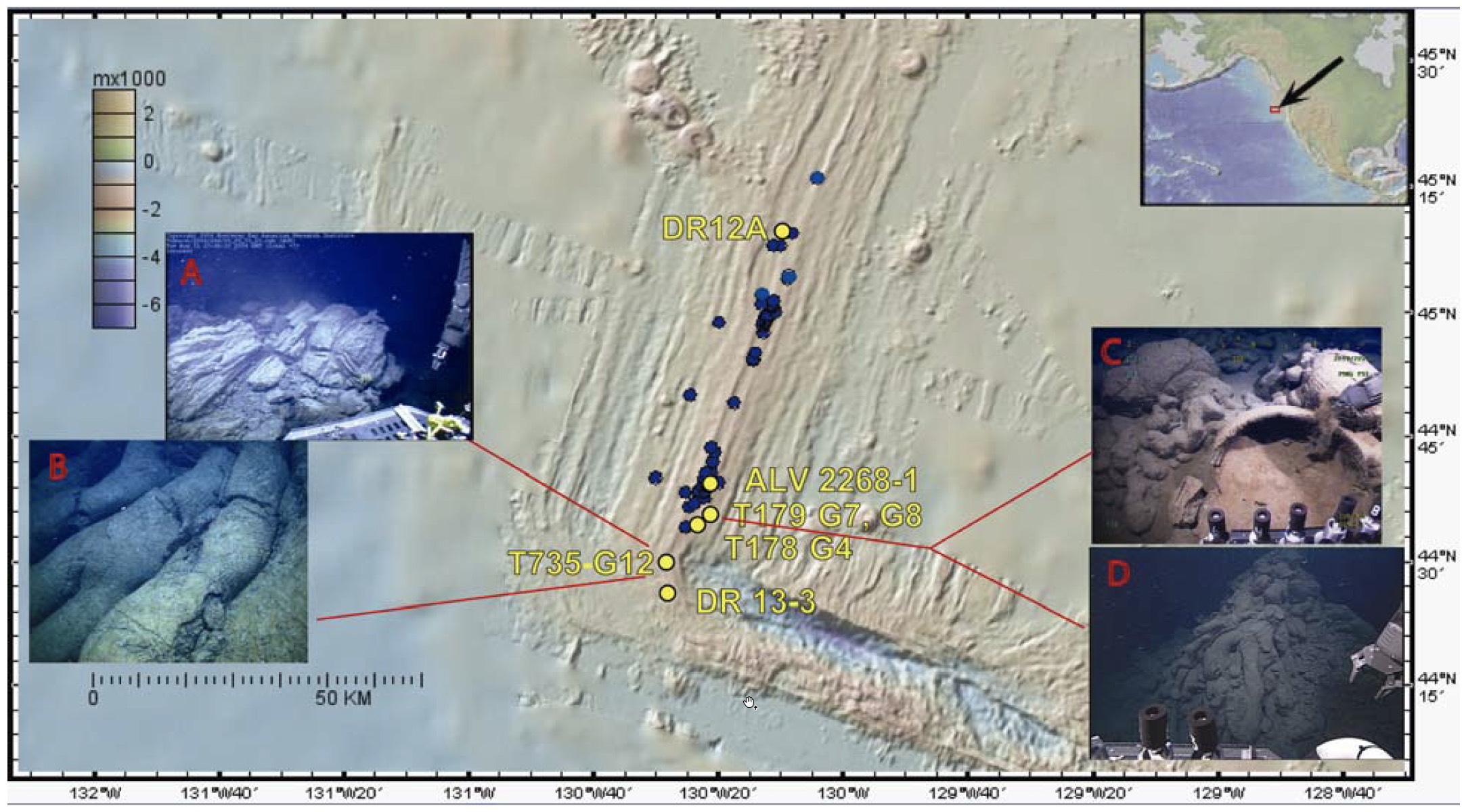1.2 The Cleft Segment of the Juan de Fuca Ridge (continued)
The largely symmetrical and structurally simple southern Juan de Fuca Ridge was created as a result of a tectonically complex history of propagating rifts and changes in plate motion associated with the breakup and subduction of the Farallon plate beneath North America [Wilson, 1988; Wilson et al., 1984]. Based on the youngest magnetic anomaly patterns, the southward propagation of the southernmost Juan de Fuca ceased approximately 1.4 Mybp with abrupt terminations at the Blanco Transform Zone (BTZ) [Embley and Wilson, 1992]. The BTZ has undergone several northward jumps at this intersection in concert with the conjugate processes of rift propagation and failure. Embley and Wilson [1992] suggest that the most recent readjustment was a northward jump at approximately 0.4 million years ago. The JdFR-BTZ ridge-transform intersection is characterized by an abrupt termination of the BTZ against a hummocky and inflated ridge crest that overshoots and hooks around the deep transform to the south (Fig. 1.03).
Figure 1.04 shows the locations for the MOR lavas you will examine as part of this investigation as well as the locations of recovered basalt samples reported in the PetDB geochemical database, an online geochemical database of rocks from the ocean floor [https://search.earthchem.org/]. MOR lavas for this study (except sample DR12A) were all recovered in situ from the southern portion of the Cleft Segment using the submersible Alvin (operated by the National Deep Submergence Facility [NDSF] at Woods Hole Oceanographic Institution) or the remotely operated vehicle (ROV) Tiburon (owned and operated by the Monterey Bay Aquarium Research Institute). All of the lavas were recovered either within the Axial valley or off-axis from the nearby surrounding ridge flanks. As such, these samples are all relatively young, postdating any of the ridge-axis readjustments described above. Sample DR12A was recovered from the ridge axis of the southernmost portion of the Vance segment, the JdFR segment immediately north of the Cleft segment.
- Igneous Rocks: Activities
